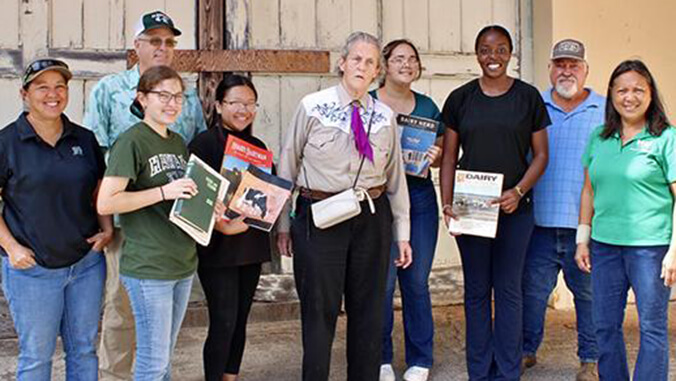
To alleviate issues within the Hawaiʻi livestock industry, members from the University of Hawaiʻi are aiming to restore the Waialeʻe Livestock Research Station on the North Shore of Oʻahu, which was once a heavily relied upon community resource for livestock feed, harvesting, research and more.
As the state faces limited livestock slaughter capacity, UH Mānoa College of Tropical Agriculture and Human Resources (CTAHR) Cooperative Extension faculty, Human Nutrition, Food and Animal Sciences students, and Oʻahu North Shore stakeholders look to the front runners of the livestock industry as inspiration to revamp the research station.
Temple Grandin—a renowned livestock industry leader—expressed her support for the restoration of the station, and consulted with lifelong North Shore resident Paul Eguires to share her knowledge on new concepts of efficient and humane livestock-handling facilities. Eguires plans to return the site’s slaughter capability to a functioning state.
“Temple has had significant influence in the design and construction of efficient and humane livestock-handling systems across the U.S. and across the globe,” said Jeff Goodwin, Hawaiʻi State 4-H program leader.
"Grandin, also a widely respected and international spokesperson on autism, visited the Urban Garden Center to speak to members of the autism community. As an alumna of 4-H—;a national program with its Hawaiʻi branch sponsored by CTAHR's Cooperative Extension—she said that 4-H helped her get out of her autistic shell."
“It became obvious to the crowd that the way autistic kids experience the world relates directly to how Temple Grandin looks at the livestock facilities she plans and constructs,” said Goodwin. “These two fields of expertise, animal behavior and world-perception of an autistic youth, have many common elements to them. Temple uses her world-perception as an autistic person to design the most humane animal-handling facilities in the world.”
The mission of Grandin’s work in agriculture and her work in helping families touched by autism have a common goal.
“Making the lives of others better (human and animal), doing something of lasting value with your life, that’s the meaning of life,” said Grandin. “It’s that simple.”

